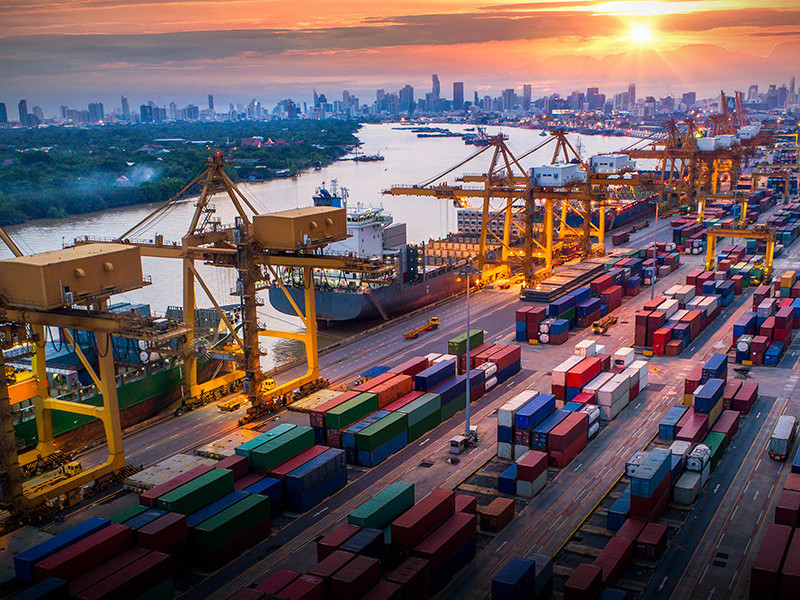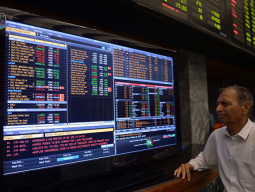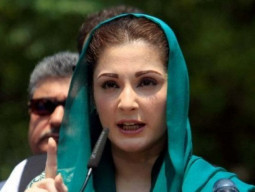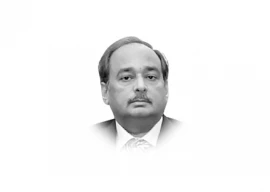
Indian Minister for External Affairs, S Jaishankar, visited Islamabad on October 15-16 to attend the meeting of the heads of government of the Shanghai Cooperation Organisation (SCO). The visit wasn't bilateral, and Jaishankar didn't hold formal talks with his Pakistani counterpart - except a brief chat with Prime Minister Shehbaz Sharif.
Yet the fact that it was the first visit to Pakistan of a senior Indian leader since Prime Minister Narendra Modi's surprise arrival in Lahore in December 2015 on the invitation of his counterpart Nawaz Sharif has set tongues wagging that the trip has broken the ice that has in recent years characterised the relations between the two South Asian neighbours. In particular, in view of the strategic shift in Islamabad from geopolitics to geoeconomics, the visit has generated the optimism of a possible revival in economic relations between Pakistan and India, the two largest economies in the region.
At the time of Pakistan's birth, India was its largest trading partner, accounting for about 70% of its global trade. In 1948, when the General Agreement on Tariffs and Trade (GATT), the World Trade Organisation's (WTO) predecessor, was unveiled, both Pakistan and India became its members and granted each other the most favoured nation (MFN) status. Contrary to its apparent meaning as well as popular perceptions, the MFN status doesn't mean any preferential or special treatment; instead, it means only normal trading relationship or treating all trade partners equally. The Pak-India trade relations were disrupted by the 1965 war and remained suspended till 1973. When the economic relations resumed in 1974, the MFN principle was set aside by each nation and the trade was conducted on the basis of 'positive lists.'
The positive list approach means that only the specified items can be imported; while trade on the rest will be prohibited. Understandably, the institution of positive lists drove down Pakistan-India trade. In 1995, the WTO replaced the GATT, as the flagship body of international trade rules, and retained the MFN as its constitutional principle. Both India and Pakistan became the WTO's founding members. In 1996, therefore, New Delhi restored Islamabad's MFN status. Pakistan, however, continued the positive list for India, thus restricting imports from its eastern neighbour. The positive list was gradually expanded and was replaced with a 'negative list,' in 2011. The negative list means that all the products are importable and subject to normal or MFN tariffs except for the specified items. In case of Pakistan, the negative list for India comprised 1,963 products or tariff lines (TLs), which made up about 28% of the former's total importable items. The list was later cut to 1,209 TLs.
The replacement of the positive with the negative list signalled Pakistan's intentions to normalise trade with India. Around that time, Pakistan officially held its single-country exhibition, named 'Alishan Pakistan,' in New Delhi in April 2012. Its second edition was held in the same city in September 2014. Both the editions generated a good response, as consumer tastes are remarkably similar on both sides.
Pakistan and India are also members of the 2006 South Asian Free Trade Agreement (SAFTA), under which they are committed to according preferential tariff (between 5 and 8%) treatment to each other. However, in spite of SAFTA, the products placed on the negative list remained un-importable from India. Moreover, under SAFTA both countries maintain Sensitive Lists on which no tariff concessions are offered. The Sensitive Lists of India and Pakistan consist of 614 and 936 TLs respectively at 6-digit HS Code.
The bilateral trade received a big jolt when India revoked Pakistan's MFN status in the wake of the Pulwama (in Occupied Jammu and Kashmir (J&K)) incident in February 2019. A few months later, in August, when New Delhi unilaterally rescinded the autonomous status of the J&K state, the bilateral trade came to a complete halt (except for a few essential products like the pharmaceuticals).
Despite Islamabad withholding the MFN on New Delhi, over the years, bilateral trade remained heavily in favour of India. In 2018, the last year of 'normal' trade, Pakistan's exports to and imports from India valued at $385 million and $1.9 billion respectively, thus giving our eastern neighbour $1.5 billion in trade surplus. One obvious reason for India's trade surplus was its larger economic size and thus lower cost of production.
However, a no less important factor was the non-tariff barriers (NTBs) maintained by India, such as tariff rate quotas, cumbersome customs clearance and standards compliance procedures, restrictive routes through which merchandise can pass and frequent use of trade defence measures like anti-dumping duty. By and large, Indian NTBs are more stringent for textile and clothing and agricultural products - both of special export interest to Pakistan. Though these barriers have not been Pakistan specific and are applied on MFN basis, they undeniably constituted a serious obstacle to Pakistan's market access in India.
Likewise, out of the 614 TLs included in India's Sensitive List under SAFTA, 182 pertain to textile and clothing (T&C), while 139 are agricultural. T&C and agriculture are the mainstay of Pakistan's exports. Hence, several products of export interest to Pakistan face MFN tariffs in India, which are on the whole high. For instance, on T&C, India applies compound (both ad valorem and specific) tariffs, which in some cases are in excess of 100%. On leather products, fruits and vegetables, and cereals maximum Indian applied tariffs are 70% 100% and 150% respectively.
It was Pakistan's relatively large trade deficit with India that had been a major economic cause of concerns on this side of the border about giving India MFN treatment. If imports were opened, cheaper Indian goods would likely flood the Pakistani market, just as the Chinese products did after the 2007 China-Pakistan Free Trade Agreement. While such concerns might not be misplaced, the relatively inexpensive finished Indian goods will benefit consumers in Pakistan, while cheaper intermediate goods and raw materials will benefit business users. Not to forget, because of its sheer size, India represents one of the largest markets in the world. In the end, trade always represents a trade-off, having both winners and losers.
THE WRITER IS AN ISLAMABAD-BASED COLUMNIST
























COMMENTS
Comments are moderated and generally will be posted if they are on-topic and not abusive.
For more information, please see our Comments FAQ